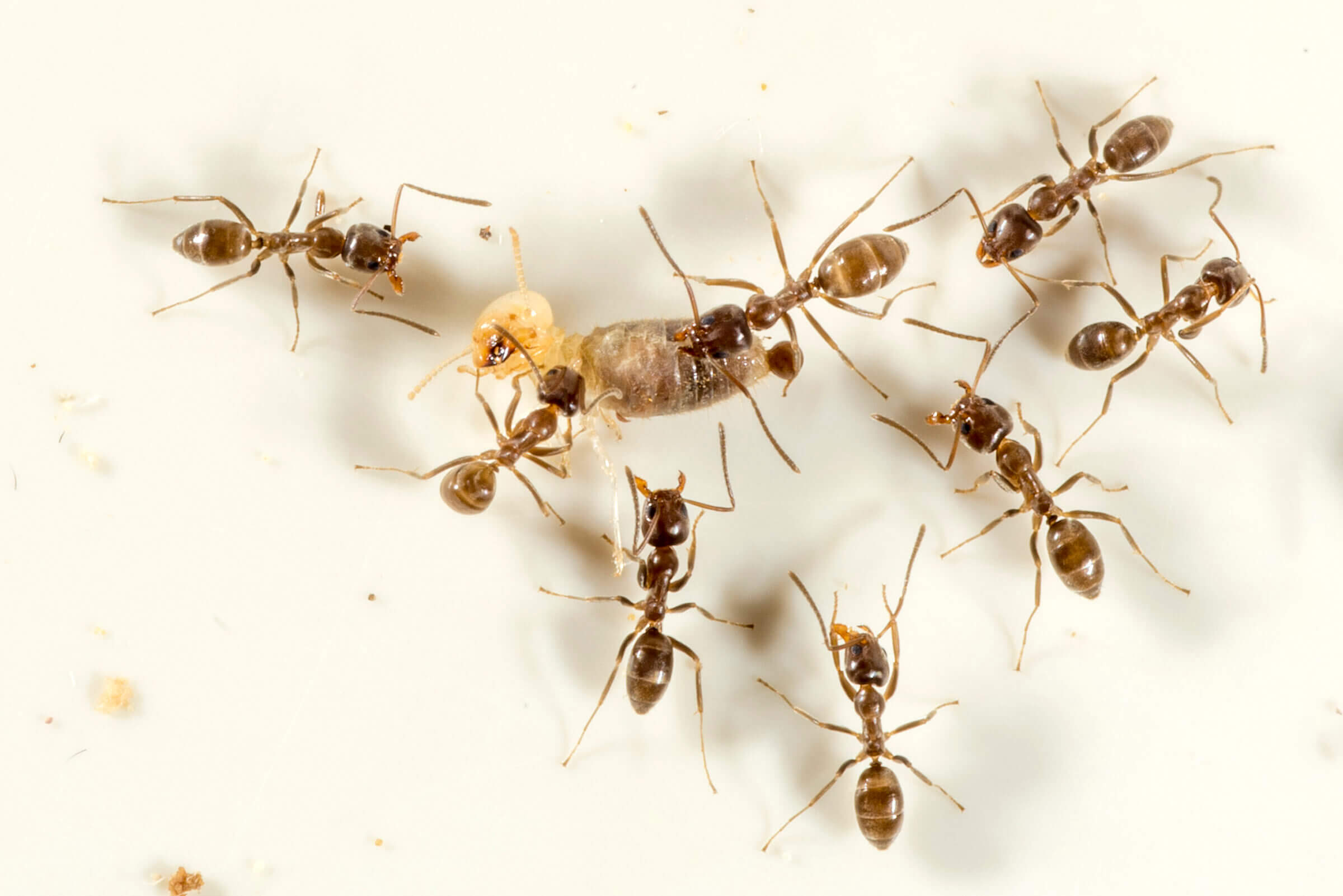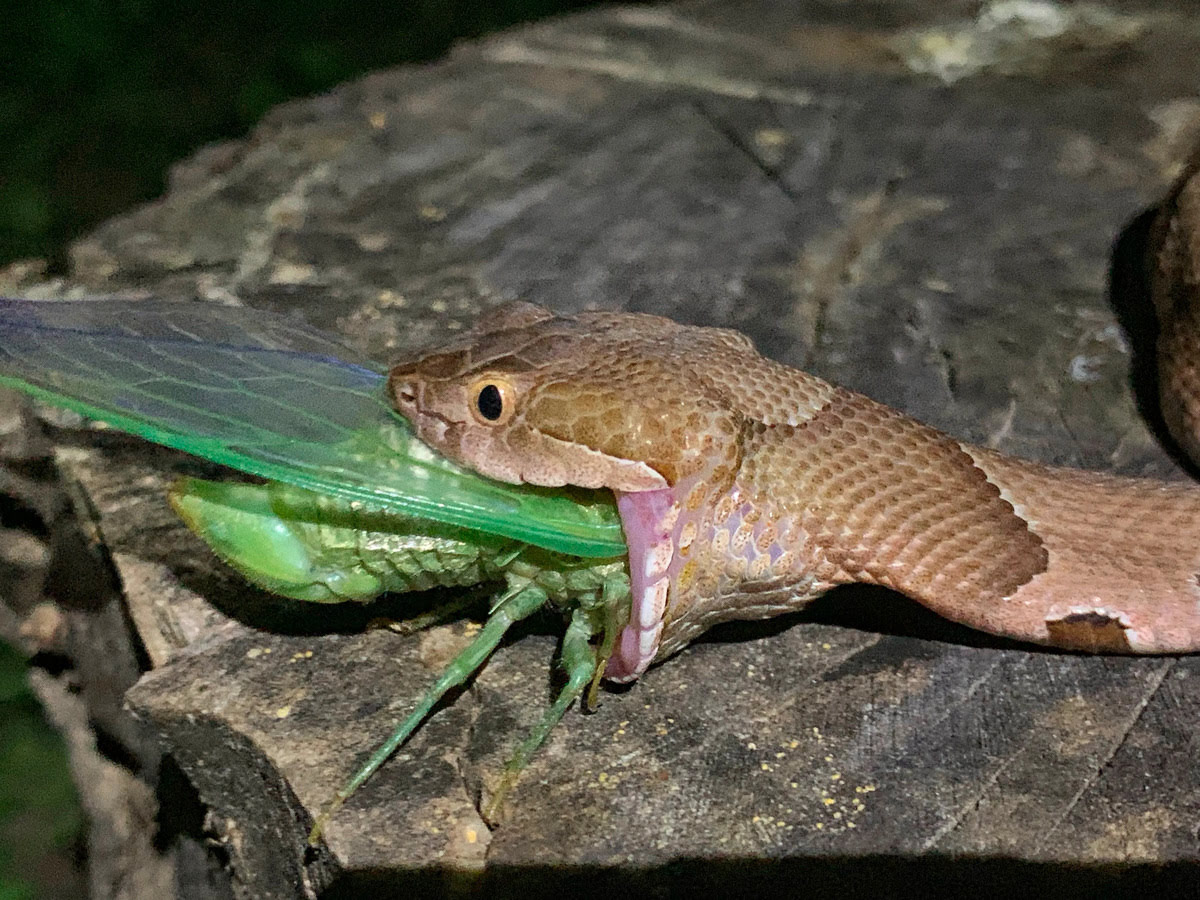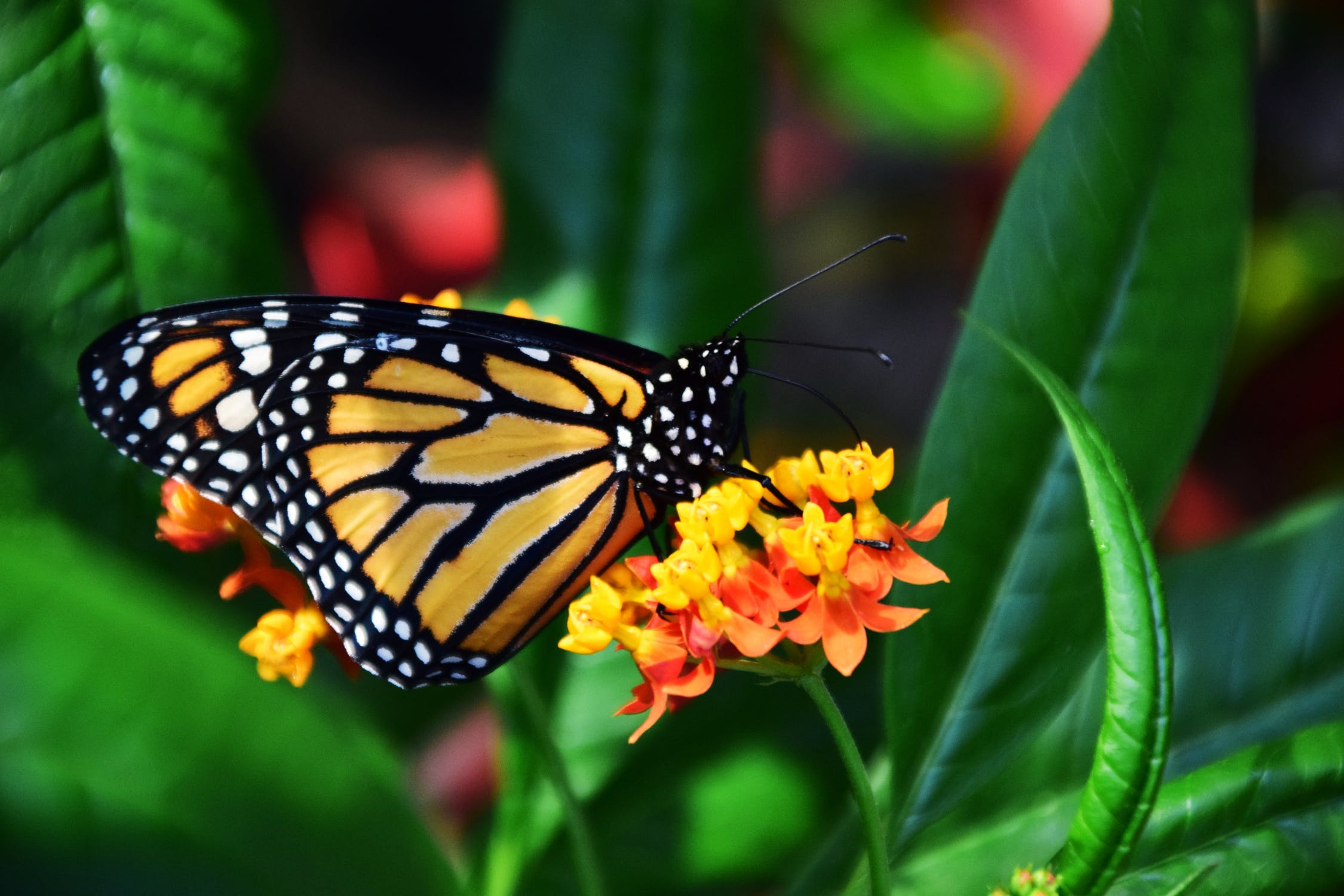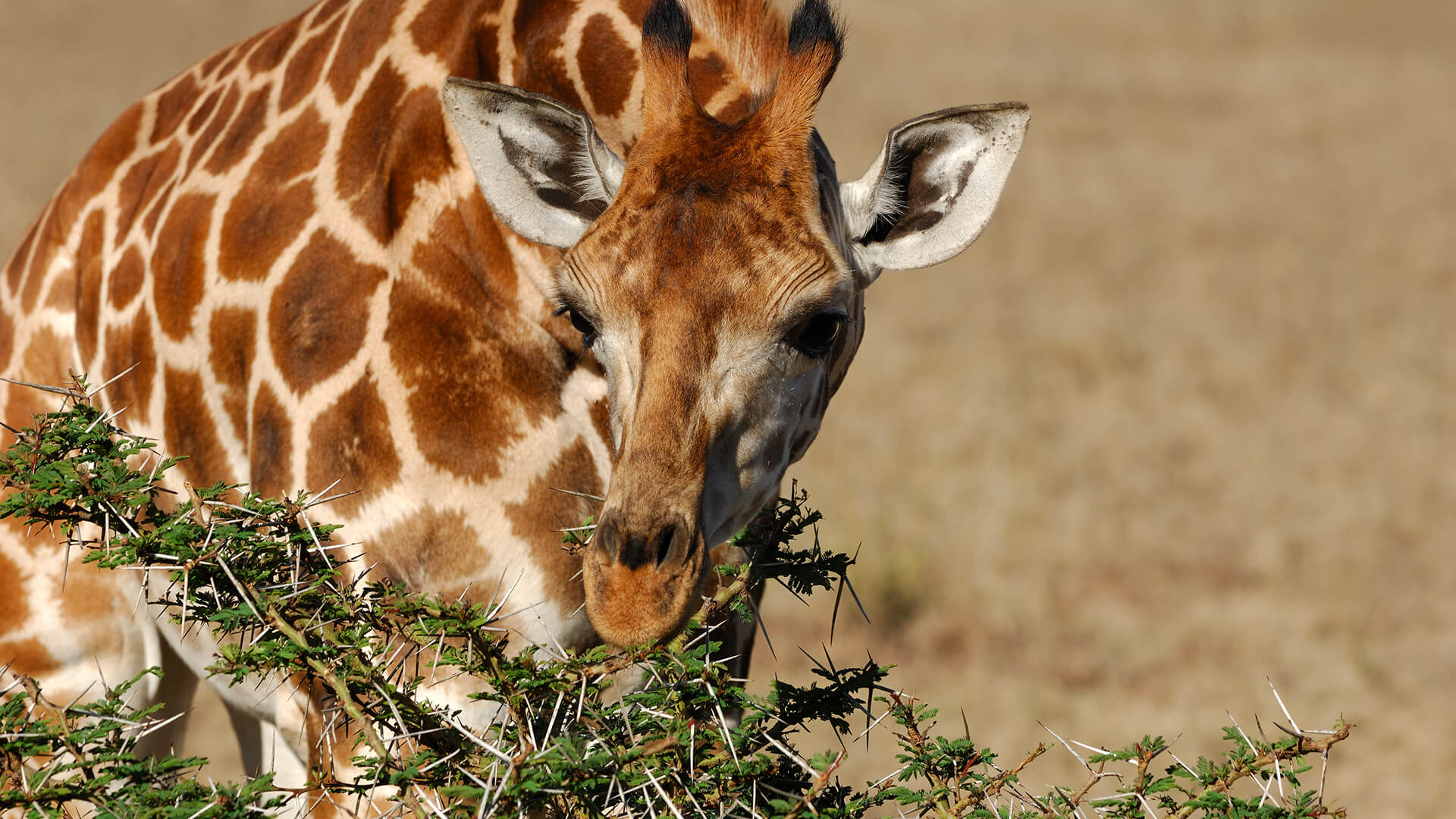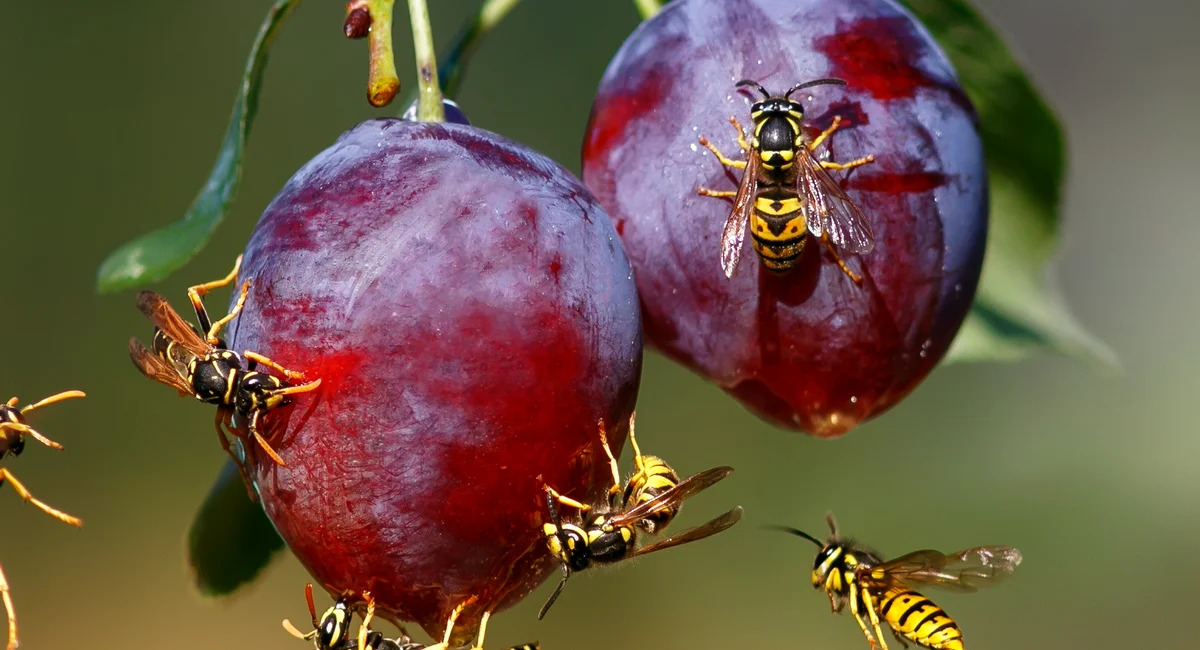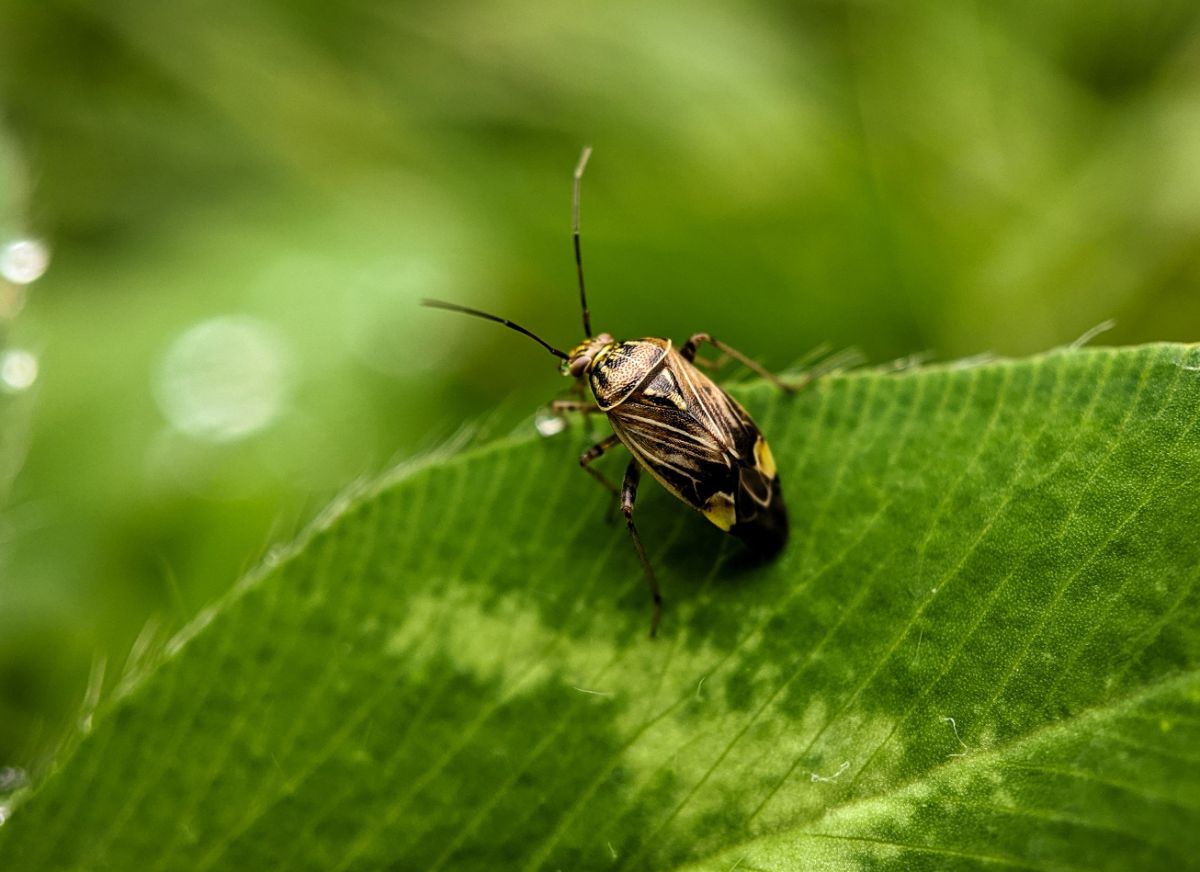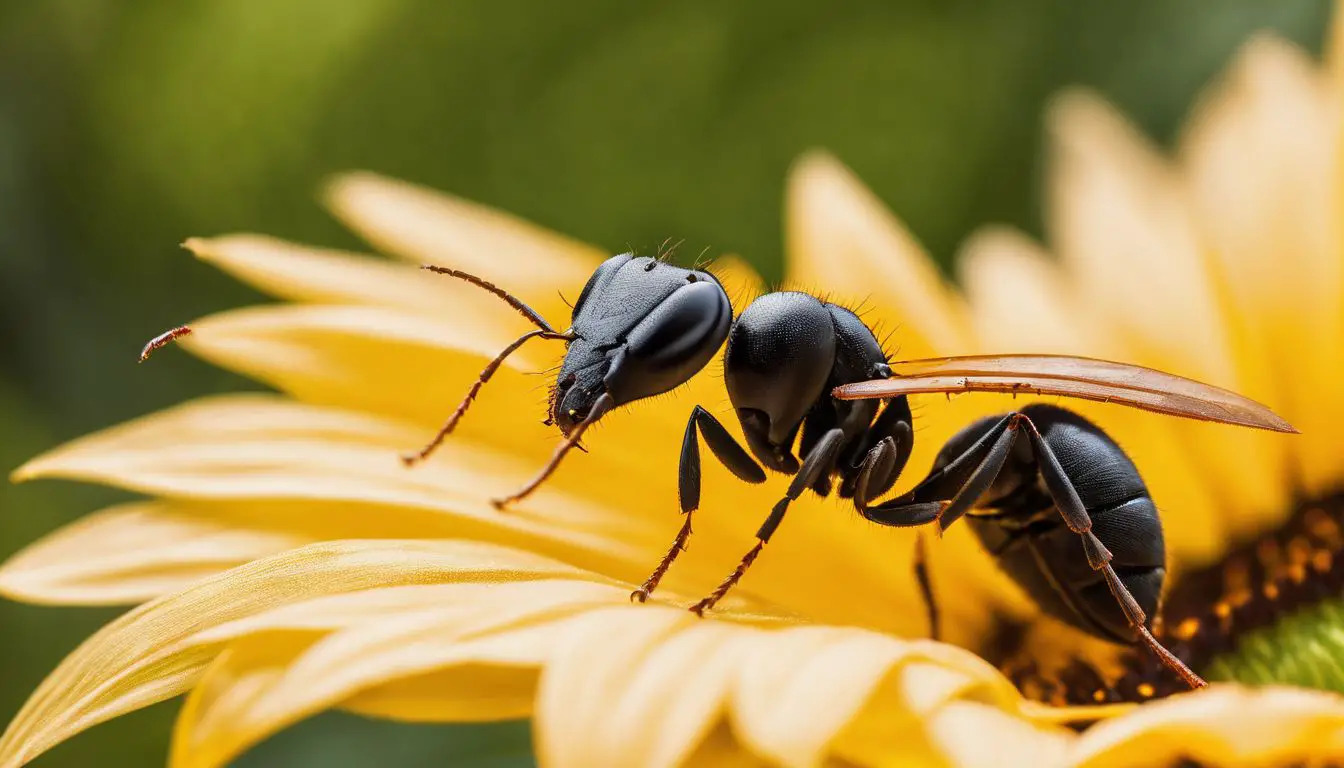Home>Gardening News and Trends>Latest News>What Insects Eat Trees
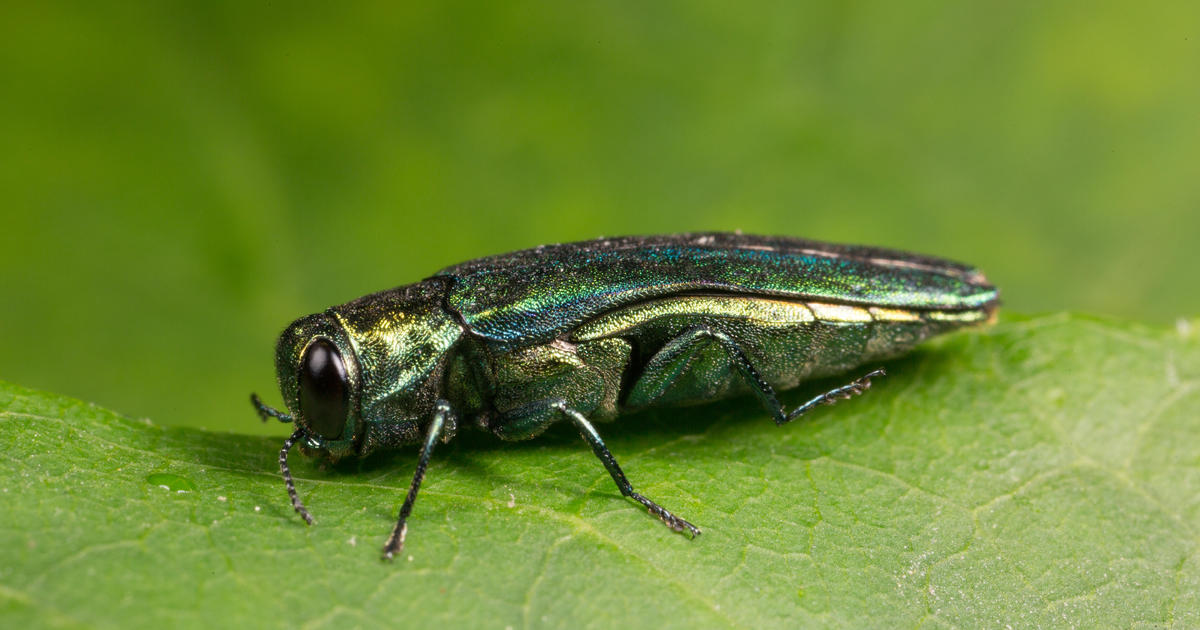

Latest News
What Insects Eat Trees
Published: December 7, 2023
Stay up-to-date with the latest news on what insects eat trees. Find out how these pests can harm trees and what you can do to protect your precious foliage.
(Many of the links in this article redirect to a specific reviewed product. Your purchase of these products through affiliate links helps to generate commission for Chicagolandgardening.com, at no extra cost. Learn more)
Table of Contents
Introduction
When it comes to the complex and intricate relationships between nature’s creatures, few bonds are as fascinating as the one between insects and trees. As the backbone of our planet’s ecosystems, trees play a vital role in providing shelter, food, and resources for a vast array of organisms, including insects.
Insects have evolved alongside trees for millions of years, developing unique adaptations that allow them to thrive in various habitats. From the treetops to the forest floor, insects have diversified their feeding habits to exploit different parts of trees, including leaves, bark, sap, and even wood.
This article delves into the intriguing world of insects and their dietary preferences when it comes to trees. We will explore the importance of trees for insects, the different types of insects that feed on trees, and the impact they can have on tree health and overall ecosystem functioning.
Understanding what insects eat trees is not only fascinating from a scientific standpoint but also crucial for the proper management and conservation of our forests. By recognizing the intricate web of interactions between insects and trees, we can make more informed decisions to protect and promote healthy tree populations.
So, let us delve into the world of insects and discover the remarkable ways in which they sustain themselves by dining on trees.
Importance of Trees for Insects
Trees serve as important hosts and providers of resources for insects, playing a crucial role in sustaining their populations. Here are some key reasons why trees are essential for insects:
- Food Source: Trees provide insects with abundant and diverse food sources. Leaves, fruits, flowers, and seeds are all part of the menu for many insects. They feed on these plant parts, extracting nutrients and energy necessary for their survival and reproduction.
- Shelter and Habitat: Trees offer a variety of physical structures that insects can use as habitats. Tree canopies provide sheltered spaces where insects can find protection from predators and adverse weather conditions. Tree branches, hollows, and crevices offer nest sites for many insects, including bees, wasps, and beetles.
- Life Cycle Support: Many insects have complex life cycles, involving different stages such as eggs, larvae, pupae, and adults. Trees serve as crucial hosts for these different life stages. For example, several species of butterflies lay their eggs on specific tree species, ensuring a suitable food source for their larvae.
- Pollination: Trees play a significant role in the pollination process, which is essential for the reproduction of many plants. Insects, such as bees, butterflies, and beetles, visit tree flowers in search of nectar and pollen. As they move from one tree to another, they transfer pollen, enabling cross-pollination and ensuring the production of seeds and fruits.
- Interaction Diversity: Trees create microhabitats within their ecosystem, supporting a wide range of other organisms. This diversity attracts insects, which interact with other animal species like birds, bats, and mammals. Insects can serve as food sources for these animals, creating a delicate balance within the ecosystem.
The interdependence between trees and insects exemplifies the intricate and delicate nature of ecological relationships. By recognizing the importance of trees for insects, we can better appreciate their role in maintaining functioning ecosystems and promoting biodiversity.
Insects that Feed on Tree Leaves
Leaves are a vital component of a tree’s physiology, as they harness solar energy through photosynthesis. However, many insects have evolved to exploit this abundant resource as a food source. Here are some notable insects that feed on tree leaves:
- Caterpillars: Caterpillars are the larval stage of butterflies and moths and are well-known leaf eaters. They have specialized mouthparts for chewing and are often seen munching on leaves voraciously. Some caterpillar species, like the tent caterpillar, can defoliate entire sections of a tree if their populations are large enough.
- Leaf Beetles: Leaf beetles are a diverse family of insects that can vary in size, shape, and color. Many leaf beetle species have evolved to feed exclusively on certain tree species. They often have specialized adaptations, such as strong jaws or chemical defenses, to deter predators while consuming leaves.
- Gypsy Moths: Gypsy moths are notorious defoliators of trees, particularly oak and other hardwood species. The larvae feed on leaves, defoliating trees and potentially causing significant damage. Gypsy moth outbreaks can be destructive, leading to weakened trees and increased susceptibility to disease or other infestations.
- Leaf Miners: Leaf miners are a group of insects, including various species of flies, moths, and beetles, whose larvae feed between leaf layers. They create distinctive tunnels or mines as they consume the leaf tissue, leaving visible trails. While leaf miner damage is unsightly, it typically does not cause severe harm to the host tree.
- Sawflies: Sawflies are in the same order as bees and wasps, but they have larval forms that resemble caterpillars. They have chewing mouthparts and can defoliate trees by consuming large amounts of leaves. Sawfly larvae are often found in groups, making their feeding more noticeable.
These are just a few examples of the many insects that feed on tree leaves. While these feeding behaviors may seem detrimental to trees, they are a natural part of the ecosystem. In fact, some degree of leaf consumption can be beneficial, helping to maintain a balance of insect populations and cycling nutrients as leaves decompose.
Nevertheless, certain circumstances, such as outbreaks or infestations, can lead to excessive leaf loss and potential harm to tree health. Understanding the interactions between insects and tree leaves can aid in managing these situations effectively and preserving the overall health and vitality of our forests.
Insects that Feed on Tree Bark
The bark of a tree is not just a protective layer; it is also a valuable resource for many insects. Bark provides a habitat and a source of food for various insect species. Here are some notable insects that feed on tree bark:
- Bark Beetles: Bark beetles are a diverse group of insects that tunnel and feed within the inner bark of trees. They often target stressed or weakened trees, creating intricate galleries as they consume the phloem and cambium layers. Bark beetle infestations can lead to tree mortality, especially in the case of aggressive species or widespread outbreaks.
- Cambium Miners: Cambium miners are insects that bore within the cambium layer of trees. These insects often belong to the group of moths, known as clearwing moths. The larvae feed on the living tissues responsible for the transport of water and nutrients, causing damage and potentially weakening the tree.
- Wood Wasps: Wood wasps, also known as horntails, are large insects that lay their eggs beneath the bark of trees. The larvae bore into the wood, feeding on the tree’s phloem and cambium layers. While their feeding habits can cause localized damage, wood wasps generally infest trees already weakened by other factors.
- Sapsuckers: Sapsuckers are a type of woodpecker that drills shallow holes into the bark to extract sap. While they primarily feed on tree sap, their actions can injure the tree and create openings for other insects and pathogens. Sapsuckers can be beneficial in moderation, but excessive feeding can lead to significant damage.
- Bark Lice: Bark lice, also known as booklice or barklice, are tiny insects that commonly inhabit the crevices and bark of trees. They feed on microscopic fungi, algae, and organic matter that accumulate on the bark’s surface. While bark lice do not cause direct harm to trees, their presence is an indicator of a healthy and diverse ecosystem.
The effects of insects feeding on tree bark can vary depending on the species involved, tree condition, and overall ecosystem dynamics. While some insects, such as bark beetles, can cause severe damage and tree mortality, others play more subtle roles in nutrient cycling and biodiversity.
Understanding the interactions and ecological processes between insects and tree bark is vital for effective forest management and conservation. By recognizing the delicate balance of insect activities on tree bark, we can work towards maintaining healthy tree populations and preserving the integrity of our forest ecosystems.
Insects that Feed on Tree Sap
Tree sap, a nutrient-rich fluid that flows through the phloem and xylem, serves as an important resource for many insect species. These insects have evolved specialized mouthparts to tap into this valuable source of energy. Here are some notable insects that feed on tree sap:
- Aphids: Aphids are small, soft-bodied insects that feed on the sap of various plants, including trees. They have piercing-sucking mouthparts that allow them to extract sap from phloem tissues. Aphids can multiply rapidly and may cause damage to leaves and stems. They also excrete honeydew, a sugary substance that can attract ants and promote the growth of sooty mold on tree surfaces.
- Scale Insects: Scale insects are small, often immobile insects that attach themselves to tree bark and feed on sap. They have a protective scale-like covering that shields them from predators and environmental conditions. Scale insects can weaken trees by reducing their sap flow, leading to stunted growth, yellowing leaves, and premature leaf drop.
- Treehoppers: Treehoppers are insects that have unique structures, called excrescences, on their abdomens. These excrescences serve as feeding tubes through which they access the tree’s sap. While treehoppers generally do not cause significant harm to trees, their feeding activities can create small wounds on the bark, potentially attracting other pests or pathogens.
- Leafhoppers: Leafhoppers are small insects that have a similar feeding mechanism to aphids. They puncture plant tissues with their stylets and extract sap. Some leafhopper species can transmit plant diseases as they move from tree to tree, making them potential vectors of pathogens that harm trees and other vegetation.
- Xylem-Feeding Insects: Some insects, such as certain species of beetles and moths, have adapted to feed on the sap found in xylem tissues. These insects typically have specialized mouthparts that allow them to access the xylem vessels. While their feeding behavior is less common than sap-feeding on phloem, it can still cause damage to tree health if populations become excessive.
Sap-feeding insects play a unique role in the overall ecosystem. While their feeding activities can affect tree health and vigor, they also provide food sources for other organisms, such as ants, birds, and wasps. The interplay between sap-feeding insects and their associated predators and parasites contributes to the complexity and stability of the ecosystem.
Understanding the interactions between insects and tree sap is vital for managing pest populations and maintaining tree health. By recognizing the specific adaptations and ecological roles of sap-feeding insects, we can develop strategies that strike a balance between conserving beneficial species and mitigating potential pest-related issues.
Insects that Feed on Tree Wood
While it may seem counterintuitive, there are insects that have adapted to feed directly on tree wood. These insects possess unique physiological and behavioral traits that allow them to extract nutrients from the wood fibers. Here are some notable examples of insects that feed on tree wood:
- Wood-Boring Beetles: Wood-boring beetles, such as longhorn beetles and round-headed borers, have larvae that tunnel and feed within the woody tissues of trees. They possess strong mandibles and enzymes that help break down the wood, allowing them to extract nutrients. The feeding activities of wood-boring beetles can weaken trees, affecting their structural integrity.
- Carpenter Ants: Carpenter ants are known for excavating galleries within wood for constructing their nests. While they do not consume wood as food, they create extensive tunnels and chambers, which can weaken tree branches or the heartwood of standing trees. Carpenter ants are often attracted to decaying or water-damaged wood, further exacerbating the structural damage of trees.
- Termites: Termites are social insects with a reputation for their ability to consume and break down wood. These insects have symbiotic gut microorganisms that help them digest cellulose, the main component of wood. Termites feed on both dead and living wood, and their presence can cause significant damage to the structural integrity of trees if left unchecked.
- Ambrosia Beetles: Ambrosia beetles are unique in that they do not directly consume wood as their food source. Instead, they excavate galleries within the wood and introduce a fungus that grows on the wood surface. The beetles feed on the symbiotic fungus, which they farm within the galleries. Ambrosia beetles can impact tree health, especially if infestations are extensive or if the introduced fungus is pathogenic.
- Wood-Feeding Wasps: Some species of wood-feeding wasps, such as horntails, have larvae that bore into wood in search of suitable nest sites. The larvae will feed on the wood as they develop, gradually consuming and often hollowing out the interior of the wood. While wood-feeding wasps can cause damage, they generally target trees that are already stressed or compromised.
These insects demonstrate remarkable adaptations to break down and utilize the complex fibers of tree wood. While their feeding activities can have negative effects on tree health, it is important to note that some wood-feeding insects also contribute to the decomposition and recycling of dead wood in the ecosystem.
Understanding the role of wood-feeding insects is crucial in managing and preserving tree populations. By implementing strategies that prevent infestations and promote tree health, we can mitigate the potential damage caused by wood-feeding insects and maintain the balance of our forest ecosystems.
Tree-Infesting Insects and Their Impact
Tree-infesting insects are those that directly harm trees by causing damage to their vital structures, such as the trunk, branches, and roots. These insects can have significant impacts on tree health and overall ecosystem dynamics. Here are some common tree-infesting insects and their impact:
- Bark Beetles: Bark beetles are well-known for their ability to infest trees and cause widespread damage. These small beetles bore into the inner bark, disrupting the flow of nutrients and water. Large-scale bark beetle outbreaks can result in tree mortality and have been responsible for devastating forest losses in many regions.
- Emerald Ash Borer: The emerald ash borer is an invasive beetle species that has caused significant damage to ash trees in North America. The larvae tunnel into the bark and feed on the cambium layer, eventually cutting off the nutrient supply to the tree. Infested trees decline rapidly and often die within a few years of infestation.
- Asian Longhorned Beetle: The Asian longhorned beetle is another destructive pest that attacks multiple tree species. The larvae tunnel into the wood, creating extensive galleries that weaken the structural integrity of the tree. Infested trees may become unstable and pose safety risks, leading to their removal to prevent the spread of the pest.
- Gypsy Moth: Gypsy moth caterpillars are voracious feeders that can defoliate entire tree canopies. Their feeding weakens trees, making them more susceptible to diseases and other insects. Gypsy moth outbreaks can lead to the decline and mortality of large numbers of trees, impacting forest ecosystems and aesthetic values.
- Dutch Elm Disease: Dutch elm disease is caused by a fungal pathogen that is primarily spread by elm bark beetles. The disease affects various elm species and leads to wilting, yellowing, and eventual death of infected trees. Dutch elm disease has had a significant impact on elm populations worldwide, resulting in the loss of countless majestic trees.
Tree-infesting insects can have cascading effects on the surrounding ecosystem. They can disrupt natural forest succession, alter species composition, and impact wildlife habitats. These insects can also reduce the aesthetic value of urban trees, degrade air and water quality, and decrease the overall resilience of forested landscapes.
Effective management strategies, including early detection, monitoring, and intervention, are essential in minimizing the impact of tree-infesting insects. Timely interventions through insecticide treatments, biological controls, or the removal of infested trees can help mitigate the spread and damage caused by these pests.
Continuous research, monitoring, and collaboration between scientists, foresters, and the public are vital for understanding the behavior and spread of tree-infesting insects and developing sustainable management practices. By taking proactive measures, we can reduce the impact of infestations and protect our valuable trees and the ecosystems they support.
How Insects Affect Tree Health
Insects can have a significant impact on the health and vitality of trees. Their feeding habits, tunneling activities, and disease transmission can directly and indirectly affect tree health in various ways:
- Defoliation: Insects that feed on tree leaves, such as caterpillars and leaf beetles, can cause defoliation. The loss of foliage disrupts the tree’s ability to photosynthesize, reducing its energy production and weakening its overall health. Repeated defoliation can lead to stunted growth, reduced reproductive capacity, and increased vulnerability to other stresses.
- Stem and Bark Damage: Insects that bore into tree bark, such as borers and bark beetles, create entry points for pathogens and weaken the structural integrity of the tree. These wounds can interfere with the tree’s vascular system, impairing its ability to transport water and nutrients. Additionally, larvae feeding in the bark can disrupt phloem flow, compromising the tree’s nutrient distribution.
- Root Damage: Some insects, like root-feeding beetles or larvae of wood wasps, feed on tree roots. This can impair the tree’s ability to absorb water and nutrients from the soil, leading to reduced growth, nutrient deficiency, and increased susceptibility to drought stress. Root damage can also make trees more prone to wind throw or structural failure.
- Disease Transmission: Insects can act as vectors for various tree diseases. For instance, certain beetles or aphids can carry fungal spores or bacteria, indirectly introducing pathogens into trees when they feed or bore. The diseases transmitted can range from devastating illnesses like Dutch elm disease to chronic infections like oak wilt, further compromising tree health.
- Secondary Infestations: Insects can weaken trees, making them more susceptible to secondary infestations by other pests or pathogens. For example, trees stressed by defoliation or drought can be more easily attacked by bark beetles or fungal pathogens. This can lead to an exponential decline in tree health and increase the risk of mortality.
The negative impacts of insects on tree health can be exacerbated by factors such as environmental stressors, tree age, and overall tree vigor. Additionally, the type and magnitude of the impact can vary depending on the insect species, tree species, and the intensity of the infestation.
Understanding how insects affect tree health is crucial for the management and conservation of trees. By monitoring insect populations, implementing effective pest control strategies, and promoting tree health through proper cultural practices, we can mitigate the impact of insects and ensure the long-term survival and vitality of our valuable tree resources.
Managing Insect Infestations in Trees
Effectively managing insect infestations in trees is crucial for maintaining their health and preventing widespread damage. Here are some key strategies and approaches for managing insect infestations:
- Identification and Monitoring: Regularly inspecting trees for signs of insect infestations is essential. Look for chewed leaves, holes in bark, sawdust-like frass, or telltale signs of insect activity. Early detection allows for prompt intervention and can help prevent infestations from becoming severe.
- Cultural Practices: Implementing proper cultural practices is essential for promoting tree health and minimizing insect susceptibility. This includes practices such as proper pruning, fertilization, and irrigation. Healthy, well-maintained trees are generally less susceptible to infestations and better equipped to withstand insect attacks.
- Biological Controls: Utilizing natural enemies of pests, such as predators, parasites, or pathogens, can be an effective and environmentally friendly approach for managing insect infestations. Introducing or conserving beneficial insects, like ladybugs or lacewings, can help control populations of pests like aphids or mites.
- Chemical Control: In situations where infestations are severe or other management methods have proven ineffective, the use of insecticides may be necessary. It is important to choose insecticides that are specifically labeled for the target pest and follow all instructions and safety guidelines. Integrated Pest Management (IPM) approaches aim to minimize chemical use and prioritize non-chemical methods where possible.
- Tree Removal and Replacement: In cases where infestations have caused significant damage or pose safety risks, the removal of severely affected trees may be necessary. Removing infested trees helps prevent the spread of pests to nearby healthy trees. Replanting with pest-resistant or diversified tree species can help reduce the risk of future infestations and promote more resilient forests.
- Education and Public Awareness: Increasing public awareness about the importance of insect management in trees is crucial. Educating homeowners, arborists, and land managers about early detection, appropriate management practices, and the potential risks of invasive pests can help prevent the spread of infestations and protect tree populations.
Effective management of insect infestations requires a comprehensive and integrated approach that combines various strategies. It is important to tailor the management approach to the specific insect pest, tree species, and environmental conditions to achieve the best possible outcomes.
Collaboration among foresters, entomologists, arborists, and the community is essential in implementing successful insect management programs. By working together and staying proactive, we can minimize the impact of insect infestations, protect our valuable trees, and maintain the health and beauty of our urban and natural forests.
Conclusion
The intricate relationship between insects and trees is a fascinating aspect of the natural world. Insects have evolved various strategies to exploit different parts of trees, including leaves, bark, sap, and wood. While some insects play beneficial roles, such as pollination and nutrient recycling, others can have detrimental effects on tree health.
Understanding the dietary preferences and behaviors of insects that feed on trees is crucial for effective tree management and conservation. Recognizing the importance of trees for insects highlights the need to protect and promote healthy tree populations. By maintaining the balance of insect populations and their interactions with trees, we can ensure the preservation of biodiverse ecosystems and the sustainable functioning of our forests.
Managing insect infestations in trees requires a multi-faceted approach that involves early detection, monitoring, and proper cultural practices. Implementing biological controls, such as conserving natural enemies, can help minimize the use of chemical insecticides and promote environmentally friendly pest management. In severe cases, targeted chemical intervention may be necessary to control infestations and prevent further damage.
Regular education and awareness programs are essential for raising public understanding of the importance of insect management in trees. By equipping homeowners, arborists, and land managers with knowledge about early detection and appropriate management practices, we can prevent the spread of infestations and protect our tree populations.
Ultimately, the preservation of healthy trees and the mitigation of insect-related risks require ongoing research, collaboration, and community engagement. By fostering a collective effort among scientists, foresters, and the public, we can safeguard the invaluable roles that trees play in our ecosystems, enhance their resilience, and ensure their survival for future generations to enjoy.


